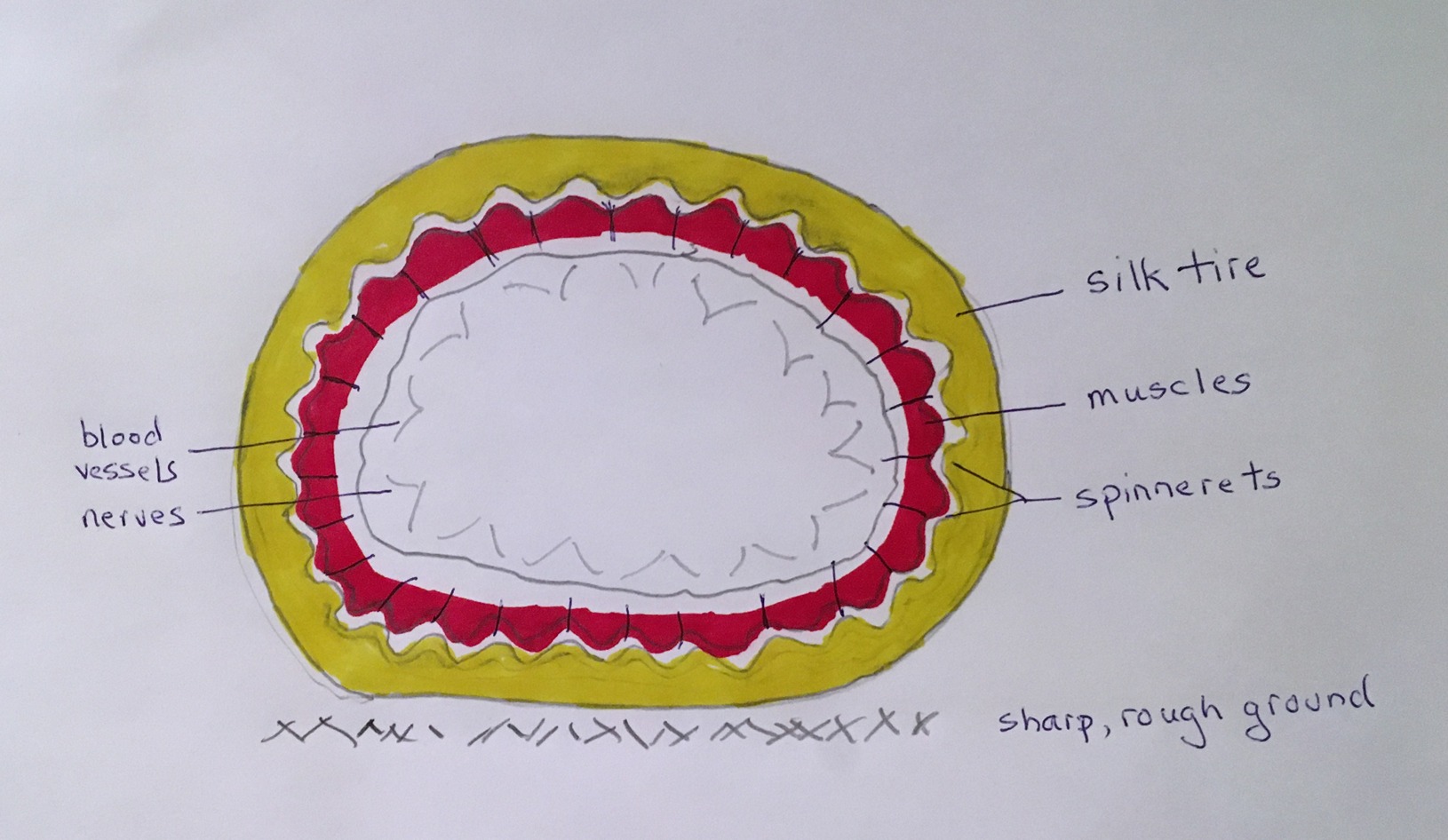Arguments against a wheeled organism mention problems with lubrication, maintenance and control.
There is a simple way to solve these issues.
For example:

- The wheel itself is not living tissue. Many creatures produce web-like material. The wheel is fabricated by a series of spinnerets that secrete a type of silk. This silk is flexible and as it wears away on the outside it is replenished on the inside.
- The inside surface of the wheel is ribbed laterally and extends sufficiently over its "driving mechanism" that it remains in place and protects it.
- The wheel is driven by the expansion and contraction of muscles against the ribbing. There is nothing here that needs to rotate. Each expansion pushes one rib of the wheel into place to be caught by the next muscle. The timing of muscle expansion and contraction determines the direction of rotation of the wheel.
- This could have evolved from simply using expansion and contraction of muscles to locomote, rather as a caterpillar might. The silk coating evolving to protect underlying soft tissue from the sharp, rough relatively flat ground over which this creature roams.
So, why are there no wheeled animals? Just chance.
